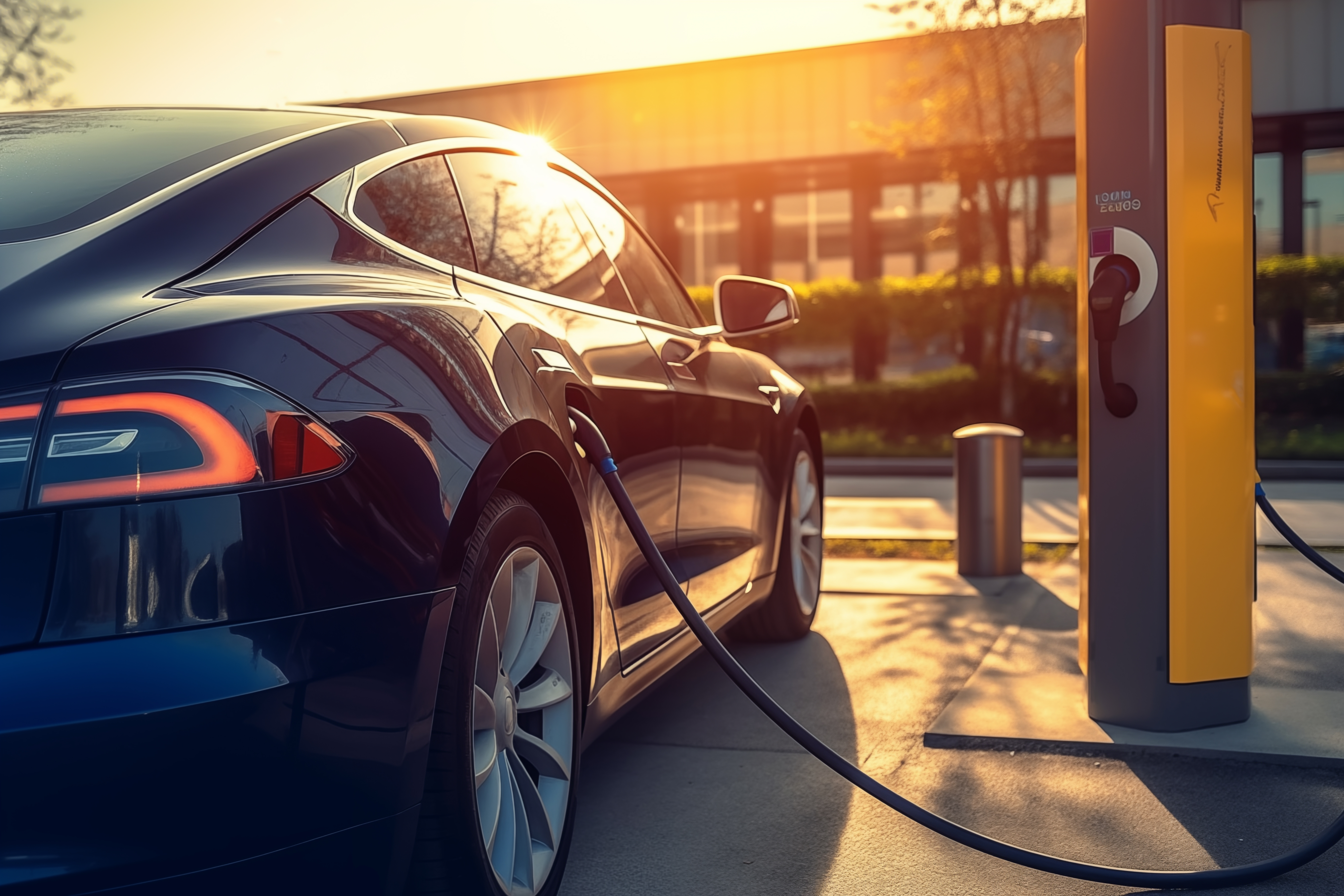3 min read
Revving for the Future: How EV Charging Stations can Benefit Your Business
Dialectic Engineering
Feb 27, 2024 10:33:01 AM

The electric vehicle (EV) revolution is here, and it's gaining momentum rapidly. With growing environmental concerns and advancements in technology, EVs are becoming an increasingly popular choice for consumers.
But this surge in demand requires a robust infrastructure to support it, and that's where Dialectic Engineering’s EV charging station expertise comes in.
Together we’ll explore the need for commercial EV charging stations, demystify the various types, and outline the benefits they offer to businesses.
The Urgent Need for Commercial EV Charging Stations
EV sales in the U.S. are experiencing exponential growth, and this trend is expected to continue. However, the current infrastructure struggles to keep pace.
Limited charging stations present a significant hurdle for wider EV adoption. By installing charging stations, your business can become a part of the solution.
Understanding the Different Types of EV Chargers
Not all chargers are created equal. Here's a quick breakdown of the different types:
Level 1 Charger |
Slowest option, typically used for overnight charging at home. |
Level 2 Charger |
Faster than Level 1, suitable for homes, public spaces and workplaces. |
DC Fast Charger |
Offer the fastest charging speeds, ideal for highway rest stops and travel hubs. |
Choosing the right type depends on factors like location, intended usage, and budget.
Building Your EV Charging Station: A Step-by-Step Guide
The electric vehicle revolution is gaining momentum, and with it comes the increasing demand for EV charging stations. While convenient public stations are popping up everywhere, installing one at your own business can offer numerous benefits – from attracting eco-conscious customers to generating revenue.
However, building an EV charging station isn't as simple as plugging in a cord. It requires careful planning, specific expertise, and following essential steps.
|
Crucial Disclaimer Installing an EV charging station involves electrical work and can be dangerous if not done correctly. It's highly recommended to consult qualified professionals for the installation process. This guide is intended for informational purposes only. |
Now, let's break down the journey of building your own EV charging station.
Step One Understanding the Components of a Charging Station
Back to step-by-step | Back to top
- Charger: The heart of the system, available at various levels offering different charging speeds (Level 1, Level 2, DC Fast Chargers). Consider factors like budget, intended usage, and vehicle compatibility when choosing.
- Mounting hardware: Poles, pedestals, or wall mounts secure the charger in a convenient location.
- Electrical cables: Heavy-duty cables connect the charger to the power source.
- Safety equipment: Ground fault circuit interrupters (GFCIs) and surge protectors ensure safety and prevent damage.
- Management software (optional): Allows remote monitoring, user authentication, and payment processing for public stations.
Step Two Assembling the Dream Team: Who Builds EV Charging Stations?
Back to step-by-step | Back to top
- MEP engineers: Design the electrical layout, considering load capacity and safety regulations.
- EV infrastructure specialists: Possess expertise in charger selection, installation, and grid integration.
- Electricians: Handle the intricate electrical work and ensure safe connections.
- Civil engineers (optional): May be needed for specific site assessments or foundation work.
Step Three How to Build an EV Charging Station: A Quick Step-by-Step Roadmap
Back to step-by-step | Back to top
- Site assessment: Evaluate your property for suitability. MEP engineers can analyze available power, parking layout, and potential challenges.
- Design planning: Collaborate with specialists to design the layout, considering charger type, number of units, cable routing, and safety measures.
- Permitting: Obtain necessary permits from local authorities based on electrical work and potential construction involved.
- Installation: The skilled hands of electricians take over, installing the charger, cables, and safety equipment according to the approved design.
- Local power connection: Coordinate with your utility provider to connect the station to the grid and ensure sufficient power capacity.
- Final testing: Rigorous testing by qualified personnel verifies functionality, safety, and compliance with regulations.
- Maintenance: Schedule regular maintenance to ensure smooth operation and longevity of your charging station.
Remember:
|
Considerations Impacting the Cost of Building an EV Charging Station
Several factors influence installation costs, including charger type, number of stations, availability of electrical EV utility rebates, and electrical upgrades needed. It's crucial to comply with safety regulations and local code requirements. While the initial investment might seem significant, the benefits outweigh the costs in the long run.
Why Businesses Should Invest in EV Charging Stations
The advantages of offering EV charging stations are numerous.
THE BENEFITS OF AN EV CHARGING STATION |
 |
Generate revenue: Offer charging as a paid service to users. |
 |
Boost customer loyalty and spending: Attract and retain EV-driving customers who stay on-site longer and may spend more. |

|
Showcase environmental commitment: Demonstrate your dedication to sustainability, attracting environmentally conscious consumers and talent. |
Embrace the Future of Mobility
The future of transportation is electric, and businesses that adapt stand to gain a competitive edge. Building EV charging stations isn't just a responsible choice; it's a strategic investment in your future success.
Are you ready to join the EV revolution? Contact Dialectic Engineering today to explore EV charging station options for your business.

